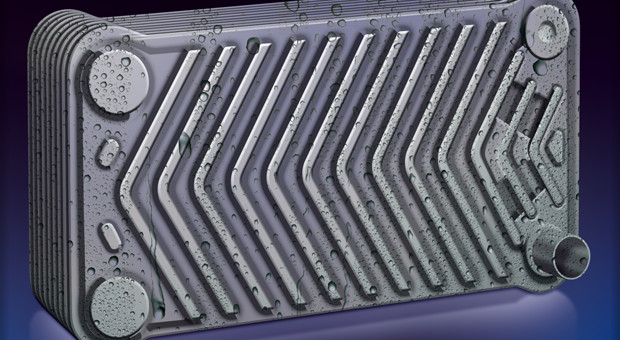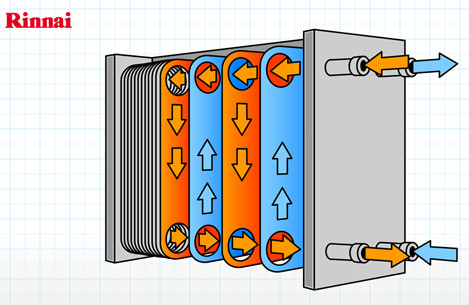Water is heated in pipes exposed to hot metal plates which have a comparatively large surface area.
What is a plate heat exchanger?
This system uses metal plates in an enclosed space to generate heat.
Because they don't take up much room, plate heat exchangers are increasingly common in domestic applications, both in their own right or as a component in another system such as a combination boiler.
How do plate heat exchangers work?
Typically, a coiled pipe containing one fluid will pass through a chamber containing another. The walls of the pipe will be made from either metal or another highly conductive material. Heat is transferred to metal plates which have a very large surface area for their size.
What are the pros and cons of Plate heat exchangers?
| Advantages | Disadvantages |
|---|---|
| Heat Transfer for the size is quite efficient | Requires hot water to enable it to work |
| These are available in numerous sizes | The large the Plate Heat Exchanger, the more maintenance it needs |
| These are more at risk to scale build up | |
| The larger heat exchangers have gaskets which can fail |

